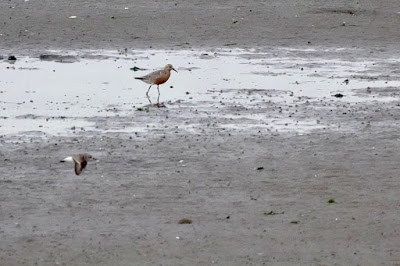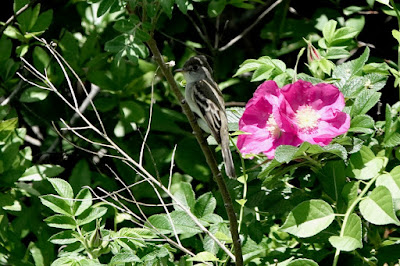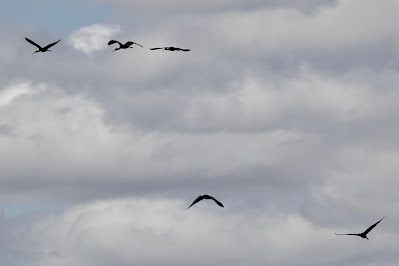For the first time this spring I decided to get away from my regular patch and do some coastal birding.
Michelle picked me up early Monday morning and we headed off to Plum Beach. We'd also make stops at Canarsie Park and Jamaica Bay Wildlife Refuge. Our targets were lingering shorebirds, waders, rails & Nelson's Sparrows.
It's always a treat to see a Red Knot in Brooklyn. According to the IUCN Red List, this species of shorebird is "Near Threatened" with populations decreasing. Hopefully conservation efforts are helping.
Meet "EL". He's the American Oystercatcher that runs all operations at Plum Beach. Banded in Georgia several years ago, he returns every spring to mate and collect "gifts" from the other birds to make sure "nothing bad ever happens to them".
Dunlin are common around coastal Brooklyn in winter. In basic plumage, however, they are mostly an overall, dull gray color. For their brief spring stop off here it's a treat to see them in their breeding plumage.
Here's the reason the shorebirds stop off at Plum Beach. Horseshoe crabs lay billions of eggs, which shorebirds rely on for fuel to continue to their breeding grounds. Overharvesting of horseshoe crabs have negatively impacted these long distant migrants.
The inner marsh of Plum Beach is a good spot to look/listen for migrating Nelson's Sparrow. More often found during the fall, we were fortunate to spot 4 of these lovely orange faced marsh sparrow. Populations are at present stable, which can't be said for the related Saltmarsh Sparrow.
Biggest surprise of the morning was finding a Purple Martin. Tripper spotted it flying around and it eventually perched in this tree...where it stayed for at least an hour. They nest across the water in Staten Island.
At Canarsie Park Barn Swallows nest under the bridge over Paerdegat Basin. Starting last year, a few Cliff Swallows have also begun nesting. This is very rare for Brooklyn. Unfortunately, this pair's nest looks unfinished & empty.
One highlight at Canarsie Park was that Yellow Warblers appear to be breeding in really good numbers at this location. Dense cover around the edges of a freshwater pond seem to be full of insects and nesting spots. This male had been singing as the female foraged below him.
By the time we arrived at Jamaica Bay Wildlife Refuge water level around the outer marshes of the West Pond were too high for shorebirds, although I managed a nice shot of some flying Semipalmated Sandpipers.
The "conk-a-ree" song of the Red-winged Blackbird always makes me think of summer. This handsome gent was singing from a low perch right next to the West Pond trail.
Tree Swallow nest boxes around the West Pond are all occupied at this point. This guy was standing guard at his and periodically chased off interlopers.
Hiding in the shade during the midday heat, this Willow Flycatcher couldn't resist make a few of his sneezy "fitz-bew" calls. I love how they throw their head back when singing, as if they are actually sneezing.
Even in distant silhouette the Glossy Ibis's long, slender, down-turned bill is distinctive. An easy ID and my first Brooklyn ibises for the year.
Something seems amiss in this tiny bath. Mrs. Catbird & Mrs. Yellow Warbler may have interrupted their spouses in an embarrassing moment. There was a lot of wing pointing and alarm calls.
Big John's Pond near the East Pond. Nuff said.
We ended our day watching this cheerful little muskrat nibbling on vegetation at the edge of the East Pond. As we were leaving, Michelle noticed that a second one was a few inches away, camouflaged by marsh grass. Maybe that's why he was smiling.

















No comments:
Post a Comment